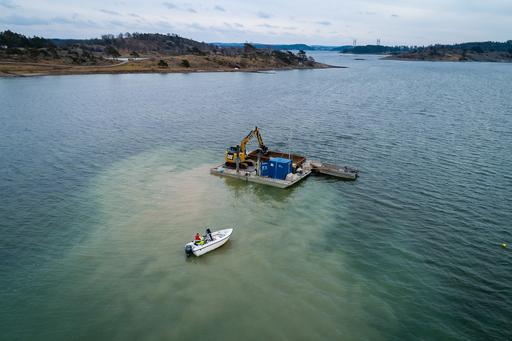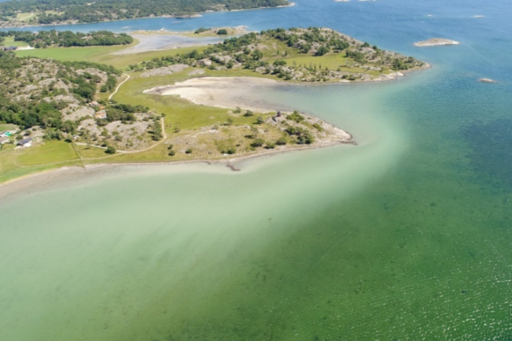Eelgrass meadows have declined dramatically on the Swedish west coast. The County Administrative Board of Västra Götaland and Gothenburg University are studying if coarse sand placed on top of the seafloor can help re-establish threatened eelgrass. The method will be tested at a small island in the municipality of Tjörn, located on the west coast of Sweden.
This is the first time restoration of eelgrass using this sand coverage technique is tested at large scale in Sweden.
"Covering the seafloor, which today consists of fine clay, with a 10-centimetre layer of coarse sand will reduce the cloudiness in the water. In this way, the eelgrass will receive more sunlight and hopefully survive and grow," says Per-Olav Moksnes, researcher at Gothenburg University who is leading the scientific work within the project.
The largest planting of eelgrass in Sweden
The County Administrative Board of Västra Götaland and Gothenburg University will start the work in March 2021 in a shallow bay at the island of Lilla Askerön, municipality of Tjörn. A total of 10,000 square metres of seafloor will be covered with coarse sand. Once this is done, 80,000 eelgrass shoots will be planted, in what will be the largest restoration attempt to date in Sweden.
"In March, the contractor will spread out 1800 tonnes of sand at one to two metres depth using an excavator on a barge. Then, later this summer, divers will plant eelgrass on the sand-covered area. The shoots used will be collected from a healthy eelgrass meadow nearby," explains Beatrice Alenius, marine biologist at the county administrative board of Västra Götaland.
Contributing to clearer water
The eelgrass's rhizomes and roots stabilize the seafloor and prevent erosion and sediment resuspension. Research show that the disappearance of eelgrass meadows can result in deterioration of environmental conditions, making recovery and restoration difficult in many areas today. When the meadow's stabilizing and protective effect on the bottom is lost, waves can stir up sediment into the water column, reducing the visibility.
"In areas with a large proportion of clay in the sediment, which is common in Bohuslän, visibility can be reduced by up to two metres. This means that eelgrass can no longer survive in areas where there were previously large meadows," says Per-Olav Moksnes.

Promising results in Denmark
The researchers want to study if the method can be used to support the successful restoration of eelgrass in areas where cloudy water prevent eelgrass growth today. Since 2018, smaller tests studies with sand have been conducted in the bay at Lilla Askerön.
"These studies show that sand coverage can also have a positive effect on the animals that live within the sediment. We have also seen that eelgrass grow twice as good in the coarse sand compared with the natural sediment in the area. Ongoing studies by colleagues in the Odensefjord in Denmark also show promising results," says Moksnes.

The measures are part of the County Administrative Board's work with environmental goals and action plan for marine environments to achieve good environmental status. The project is funded by the European Maritime and Fisheries Fund together with the Swedish Agency for Marine and Water Management.
Text: Karl-Johan Nylén
Eelgrass is a seagrass[MOU1] that forms meadows under the surface on soft bottoms in shallow coastal marine areas. Eelgrass meadows are key habitats for a variety of organisms making them important for biological diversity. They are feeding and nursery grounds for many types of fish and crustaceans. They also store large amounts of carbon and nutrients in the sediment, which contributes to reducing climate change and eutrophication. Eelgrass meadows belong to the most diverse and productive ecosystems on Earth, but they are threatened by eutrophication, overfishing and coastal exploitation.
[MOU1]Seaweed är alger.






